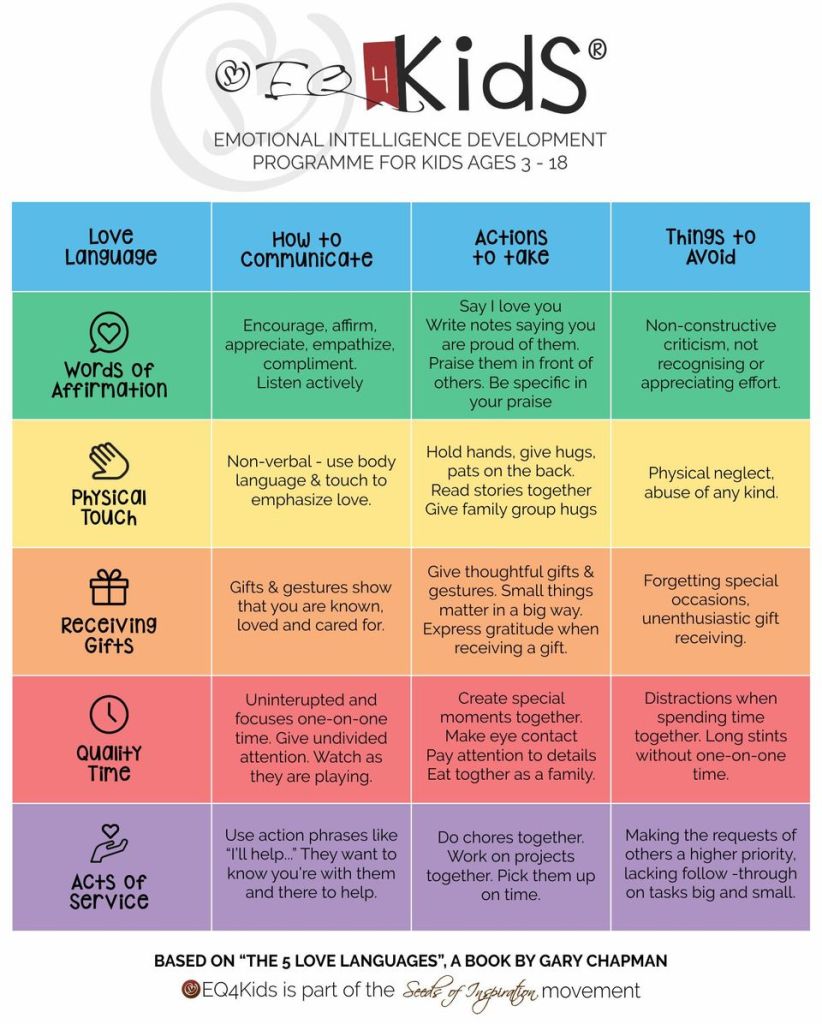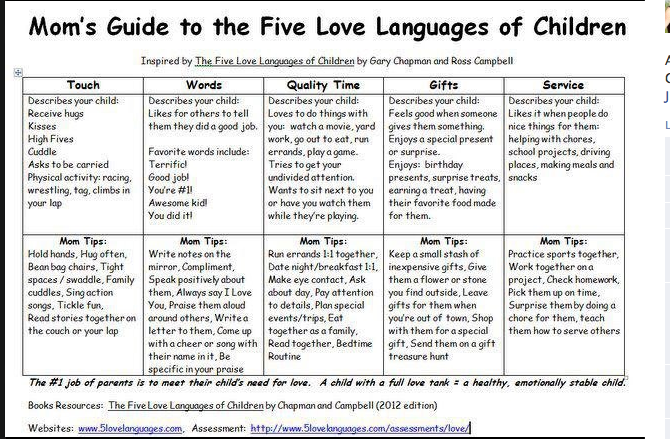
We all want to connect with our children on a deeper level. Understanding the needs and wants of our kids is a short cut to connecting. The 5 Love Languages is a tool to elicit what best translates to love for that individual. Using the short activity questionnaire (below) you can easily do (in a half hour) with your kids to find out a little more about how they tic.

5 Love Languages
A) Words of affirmation – These are the ways you express your gratitude, and even your
needs to someone else in a positive manner, such as: “I appreciate your help running
skit lines when I was sick;” “I really appreciate you doing such a good job with your
small groups.”
• Verbal compliments – “Your enthusiasm in the mornings at orientation has
been excellent;” “Thank you for answering my questions about Mason. I’m really
excited about coming here in the Fall;” “I’m sure your small group members
really love you.”
• Encouraging words – “I know you’ll do great;” “You’ve got great potential;”
“Keep it up”
• Kind words – Said in a kind and gentle tone of voice: “I care about you;” “I hope
we can learn from this experience;” “You’re not a failure just because you failed;”
“I know you can”
• Humble words – Making requests, not demands: “I really liked it when you
were on time for PL training, do you think you can do it again;” “Do you think it
would be possible to swap duties farther in advance next time;” “I’d really like it
if we could talk about this and find a solution.”
B) Quality Time – Time spent with another person with your undivided attention focused
on them. This can happen in groups, but it is a little more difficult. Togetherness
(focused attention) and Quality Conversation (focused not on what you’re saying, but
what you’re hearing) are 2 types of Quality Time.
• Sitting around and talking (TV off) – Maintain eye contact; don’t listen and do
something else at the same time; listen for feelings; observe body language;
refuse to interrupt
• Taking a walk or going somewhere together
• Playing games
• Doing something you mutually enjoy
C) Receiving Gifts – A gift is any tangible item that reminds you that someone was
thinking of you when they gave it to you. These gifts don’t have to cost any money or
take a lot of time to create. They just have to show thoughtfulness and remind them that
you care.
• A handmade or store-bought card
• Candy
• Flowers
• Snack or a meal
D) Acts of Service – This is a way of expressing love or care for someone by serving them,
doing something for them, or helping them to accomplish a task without expecting
anything in return. Sometimes, actions can speak much louder than words.
• Bringing someone coffee
• Cleaning up a mess
• Putting up someone else’s posters
• Volunteering when someone is asking for help or input
Book
The link below is to Gary Chapman’s Book on the 5 Love Languages
The 5 Love Languages of Children: (PDF) Secret of how to Love Children. (Book 317pages)
Parent Quiz
LOVE LANGUAGES MYSTERY GAME-This is the activity to discover your child’s love language.

